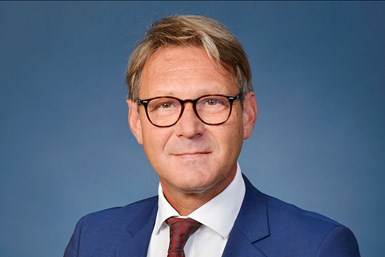Arburg Establishes Additive Manufacturing Subsidiary, Arburgadditive
The subsidiary combines Arburg’s full range of additive manufacturing activities under one roof with the aim of strengthening this business field.
Share
Read Next

Dr. Victor Roman, managing director of Arburgadditive. Photo Credit: Arburg
Arburg has created a subsidiary, Arburgadditive, which is based in Lossburg and houses all of the company’s activities related to additive manufacturing (AM) under one roof. The managing director will be Dr. Victor Roman, who is set to join the company on Dec. 1, 2021.
In founding the new company, Arburg is highlighting the significance and potential it believes AM holds as a key supplementary production method in plastic processing. Following the invention and launch of the Arburg Freeformer and its purchase of innovatiQ, the company’s logical next step was to combine the full range of AM activities under one roof with the aim of strengthening this business field.
Dr. Roman is an experienced industry expert, the company says. He studied mechanical engineering and physics before working at an international technology group for more than two decades, a role that is said to give him extensive experience in development, sales and AM.
Over the course of 2022, Arburg Plastic Freeforming will switch entirely over to the new company. This division now has around 40 employees working in sales, development, application technology and assembly. In addition, innovatiQ currently employs approximately 25 staff members and will remain an independent company based in Feldkirchen, near Munich, but will be affiliated with Arburgadditive. The innovatiQ Managing Director Florian Bautz will report to Dr. Roman.
The Arburgadditive product range includes the Freeformer and innovatiQ’s 3D systems, which are said to cover a wide range of industrial AM applications. The Arburg Plastic Freeforming (APF) process is designed to act as an open system, making it possible to adjust the component manufacturing process in line with specific requirements. The process uses verified standard granulates similar to the kind used in injection molding. The innovatiQ 3D printing systems operate on the basis of Fused Filament Fabrication (FFF) technology. There is also the LiQ 320 printing system, which processes liquid silicone rubber (LSR) in a special LAM (Liquid Additive Manufacturing) procedure. The various machines are designed to work in perfect harmony, enabling them to cover an extensive range of additive applications.
Related Content
-
Concept Sneaker Boasts One-Piece 3D Printed TPU Construction
The Reebok x Botter Concept Sneaker Engineered by HP premiered at Paris Fashion Week, hinting at manufacturing possibilities for the future of footwear.
-
3D Printed Spine Implants Made From PEEK Now in Production
Medical device manufacturer Curiteva is producing two families of spinal implants using a proprietary process for 3D printing porous polyether ether ketone (PEEK).
-
Understanding PEKK and PEEK for 3D Printing: The Cool Parts Show Bonus
Both materials offer properties desirable for medical implants, among other applications. In this bonus episode, hear more from Oxford Performance Materials and Curiteva about how these companies are applying PEKK and PEEK, respectively.













